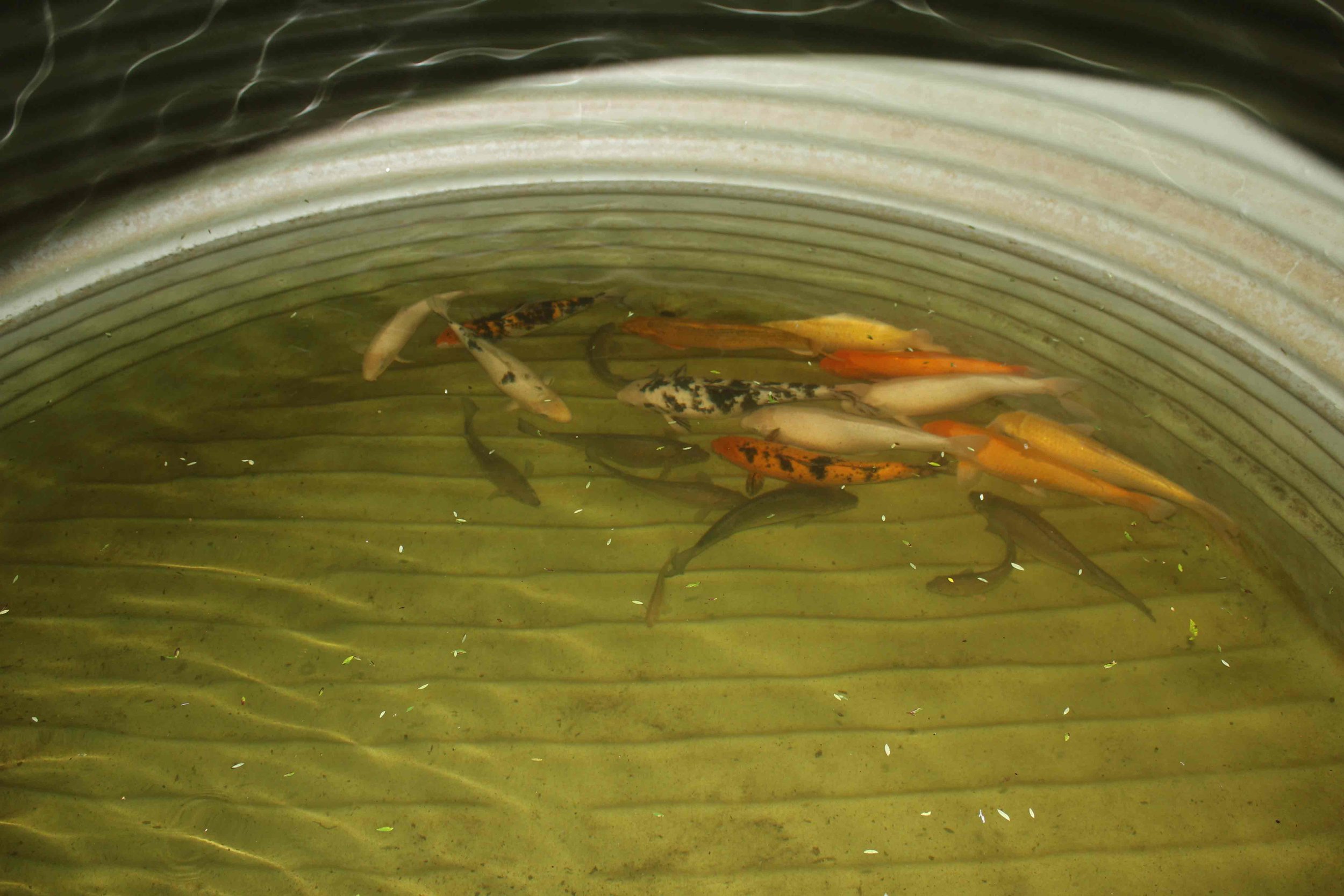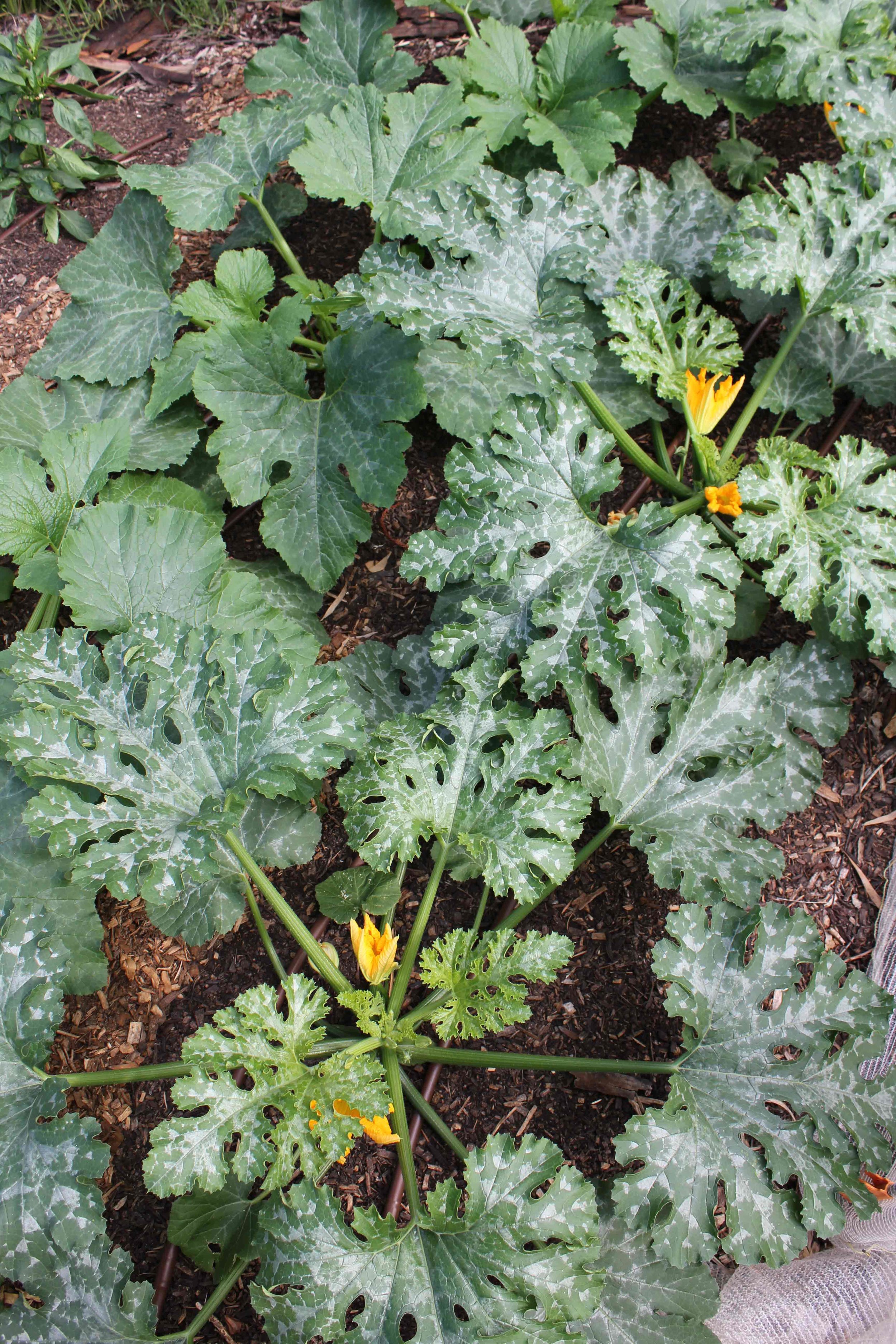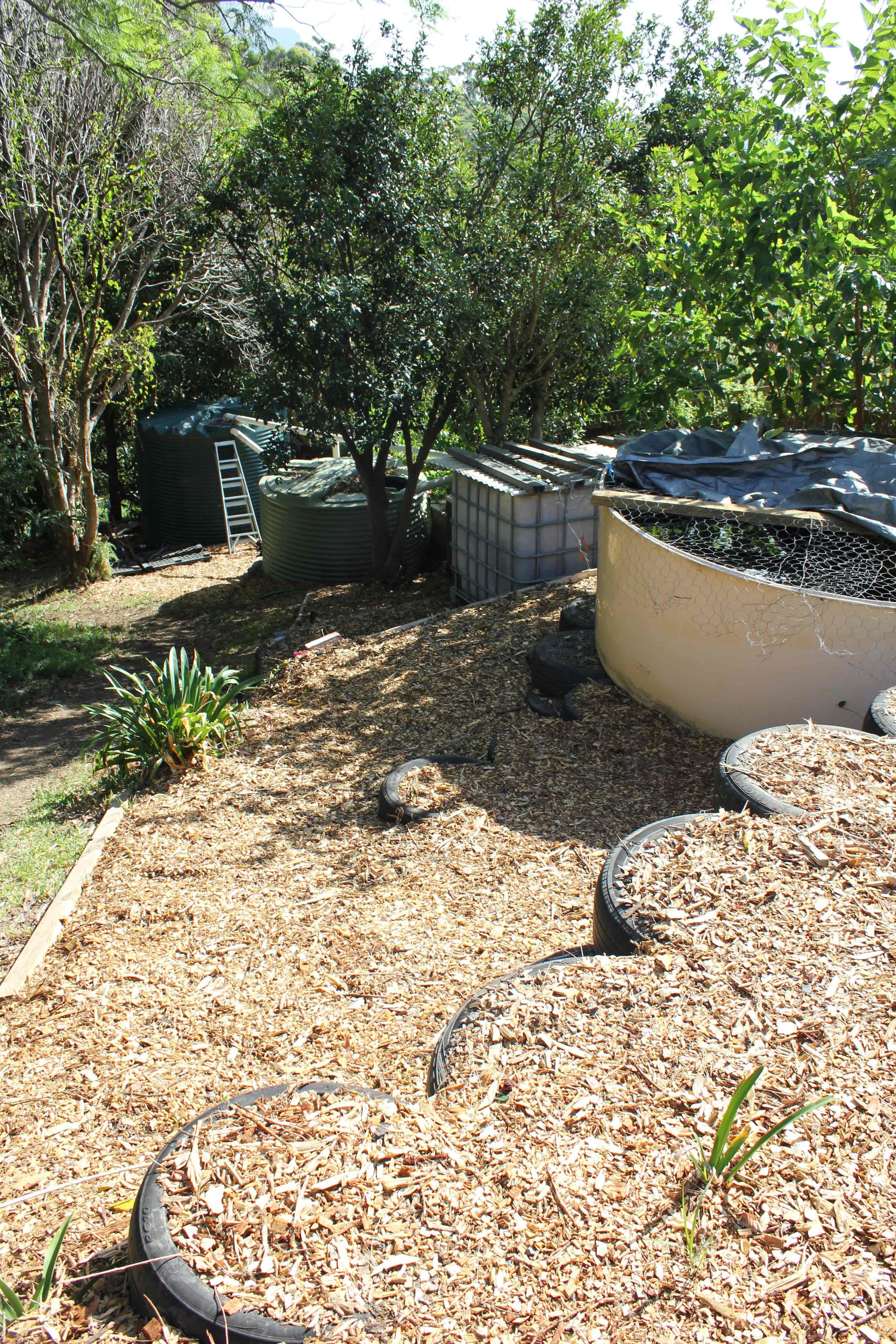farmers by choice
Behind an unassuming purple cottage at 36 George Ave Bulli, lies a 6000 square metre yard which – at the hands of former Flametree Co-op directors Marina and Dave Scozzafava, and Luke Murphy – has been successfully transformed into a thriving urban farm.
Born from a frustration that the closest locally grown vegies were coming from Dapto, the farm has been the realisation of the trio’s commitment to bring the community sustainably produced food close to home. Marina and Dave first opened their own backyard to Luke to begin growing, before buying the 36 George Ave property in 2014 with the sole purpose to grow produce, and create a space for locals to buy fresh and learn more about where food comes from.
Now with a flock of free-range chickens laying eggs, beehives producing (the best!) honey, and garden beds filled and flowing with food, the farm has filled a void in the area and is achieving exactly what it set out to do. Every Sunday, Luke, Marina and Dave open the property to the public, during which you can wander down the steep paths that wind through the yard and pluck vegies straight from the dirt! The farm also offers a service for customers to order through the Farmers by Choice Facebook page and pick up when desired, while an ‘honesty box’ sits at the front of the house, for locals to grab free-range eggs and leave payment – a system farm manager Luke says works “really well”.
We visited the property to learn more from Luke, and discovered exactly why Farmers By Choice has become such a special and integral inclusion in the Illawarra community…
Do you have a background in farming?
I grew up in George Ave, and until I started this I was a tennis coach, which people are always surprised about! At uni, I became interested in environmental rights and started doing some research about how poorly we were managing the world. And then I went to India to work on a reforestation project and that’s where I first learnt what permaculture was. When I got back I did a permaculture design course and started getting involved in the Flametree Co-op in Thirroul and gardening at Marina’s on weekends, then the opportunity to grow at this farm full-time came up and I gave up the tennis. Really, a lot of what I’ve learnt has been since I started growing here. It’s been gradual and on the job.
What does permaculture mean?
It’s a design science based on ethological principles. An easy way to sum it up is there’s three main ethics that guide the decision making – care for the Earth, care for the people, and return any surplus back to the Earth. It’s not just about gardening; it’s the whole ethos of how people are looking to live their lives and learning where food comes from.
What was the process of building the farm?
It’s been created in stages. We got the chickens in pretty quick because they start clearing the land – no-one had lived here for 10 years so it was completely overgrown with grass and weeds, some sections with lantana above your head. But the good thing about that was there was already a thriving ecosystem here – small birds and lots of bugs, which actually help the pest control when growing vegies, meaning you don’t have to spray anything. Not all our vegies are perfect because of this, but I’d rather cop that than have to use chemicals. The first year was just me, Marina and Dave, plus old Ray who lives up the street – he’s 83 and was a mate of my dad’s. I invited him down to help, and he’s just kept coming back always wanting to lend a hand. About a year after the farm started, the 60-strong Permablitz crew [a group of environmental volunteers] came and spent the day helping us. I also had a mate who set up the aquaponics.
Can you explain how the aquaponics work?
Simply, it’s a fish tank – the water from the fish tank gets pumped into gravel grow beds filled with plants, then the bacteria on the gravel and plants take on all the nutrients and help clean the water. The clean water then cycles back into the tanks. If you have fish tanks, you need to find a way to clean the water, and when you’re growing plants there has to be a way to fertilise them. So with this set-up, the problem becomes the solution.
What are the permaculture principles the farm adheres to?
Trying to take any waste products from one section and find a use for it somewhere else. So any bad vegies go to the chickens, and then their manure goes into the compost and the compost goes back into the garden to feed the vegies. Conventional farming would have a waste product that they’d try to get rid of, but here we try to link things together so the waste from one actually becomes a resource for another.
Does this process sustain the farm – is there still a need to buy things?
Mainly chicken food. We get a huge amount of scraps from people in the street, Hidden Harvest and Bulli Fruit Shop but we still need to buy grains for the nutrition of the chickens. We’re lucky to get free woodchip mulch, sawdust, straw and grass clippings from businesses in the community. As more people have found about the farm, we’ve had more reaching out to us, asking “Can you use this?”. People don’t like throwing things out so if we can use it, it’s a win for all involved.
What’s the hope for the future of Farmers By Choice?
Just that it stays here, first up, and that we can produce enough to cover land costs. Down the track it would be awesome to employ more people, and produce more food… more diverse food. At the moment, there’s spaces that aren’t being used so to fill all those niches would be great. And to have a space where people can come and get ideas that they can take back to their own gardens and spread throughout the community.
Any tips for people trying to set up their own sustainable vegie patch…
Start small, which I didn’t really do… But I started big because I had all day every day to manage it. If you don’t have lots of time, you’re better off having a couple of pots and maintaining them well. Once you see success with these, you can add more. And get involved with community gardens, ask questions to established growers – that’s the best way to learn. And trial and error, of course.
“it’s the whole ethos of how people are looking to live their lives and learning where food comes from”














